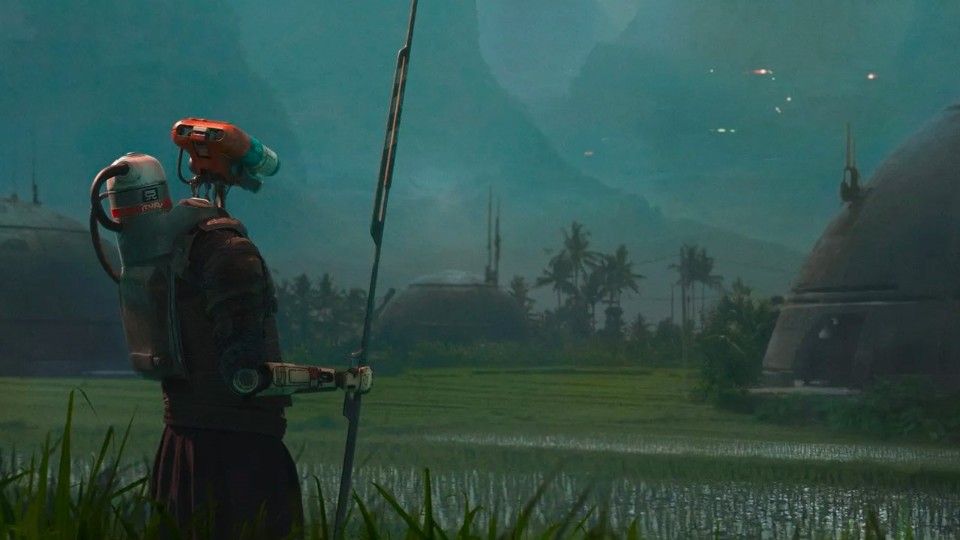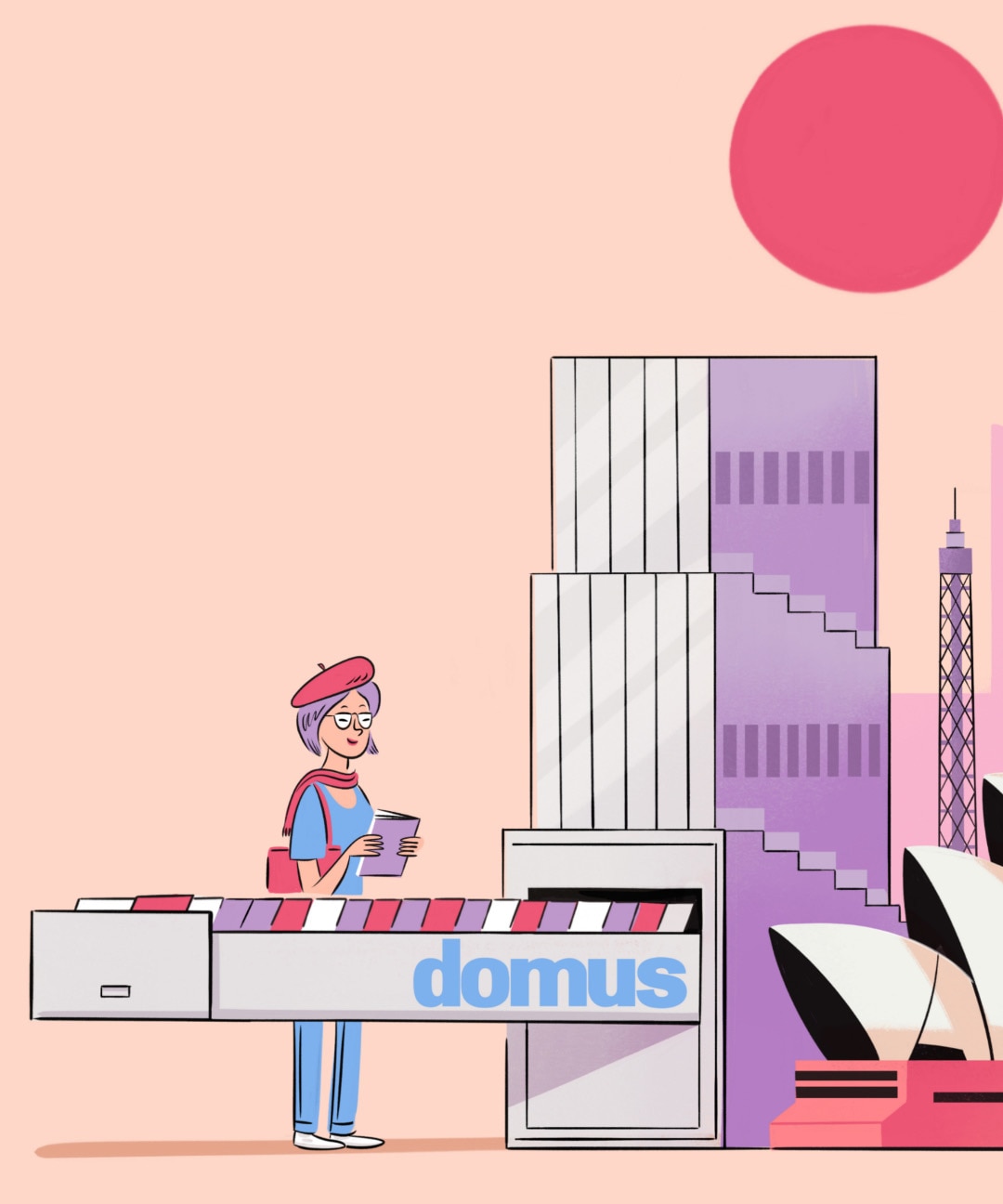In the world of artistic production, one can rarely say that something is truly original.
Especially in the audiovisual sphere, it seems that in recent years, movies and high-budget series have made it a principle not to invent anything new. Instead, the emphasis has shifted to extending narratives, embarking on new adventures with familiar characters, and exploring plot avenues within previously established worlds.
Great original films, those unbound by saga ties, untouched by the allure of sequels or prequels, free from adaptations of novels, comics, or real-life tales, remain exceptions – especially when substantial financial investments are at stake. The global cinematic debut of The Creator, Gareth Edwards’ science fiction masterpiece, marks the rare case of a completely original film. Yet, paradoxically, its very design proves the opposite, namely that originality is just another way of blending elements that already exist.
.jpeg.foto.rmedium.jpg)
The Creator is a science fiction story set in the year 2065, when the explosion of a nuclear bomb in Los Angeles destroys an entire area of the city. This catastrophe triggers a war between the United States and artificial intelligences accused of causing the devastation. In this future world, robots have humanoid traits, but retain distinct characteristics that set them apart. They coexist with humans and live in their midst. After the conflict, the artificial intelligences seek refuge in Asia, where they are not considered enemies, but are relentlessly pursued by the U.S. military. The story begins with a gripping scene of tragedy. Our protagonist, a human infiltrator among the robots, sees his wife and daughter (with whom she is pregnant) fall victim to a merciless attack by humans, that also blows his cover. Five years later, the military seeks this lost man. They need his expertise in the mechanics of the robot faction to neutralize a formidable weapon developed by the artificial intelligences.
.jpeg.foto.rmedium.jpg)
What sets The Creator apart is its ability to create, in about two hours, a world that does not conclude with the story, but leaves the suggestion of numerous untold tales. It’s indeed original, but it’s designed to spawn other unoriginal films. What’s most interesting, however, is how this meticulously detailed and character-rich world draws from a multitude of design ideas that are not original at all. Gareth Edwards has masterfully woven together a compendium of concepts and elements from the annals of science fiction spanning the past four decades, and blended it into something both new and recognizable.
The influence of Blade Runner is evident in Syd Mead’s primitively shaped buildings, the design of the flying cars, and the almost analog feel of the future technology. The rotating graphics, the references to extraterrestrial colonies, and the concept of artificial intelligences having a ‘creator’ all stem from the rich legacy of this film. In particular, the phrase “More human than human” is an explicit and direct quote that highlights the citationist nature of the film. Instead, from James Cameron’s cinematic universe, particularly from films like Aliens and Avatar, come the future military, characterized by their unwavering attitude, resilience, and passion for crafting advanced science fiction weaponry, as well as the design of futuristic warships and arsenals of weapons.
.jpg.foto.rmedium.jpg)
But there are also echoes of Star Wars, evident in the way the robots are dressed and seem to belong to different ethnicities, communities and tribes, playfully mirroring human diversity, including some reminiscent of Tibetan monks. Not to mention the use of establishing shots, offering panoramic vistas that orient the viewer and foreshadow the settings for forthcoming scenes. These shots often feature a character in the foreground, positioned off to the side, observing or overseeing the unfolding events, while the background reveals the grand stage. These are the very techniques that Edwards himself skillfully employed when he ventured into the Star Wars universe to direct Rogue One.
We can also spot a lot of Akira, the iconic Japanese animated film. This influence is palpable in the revelation of the enigmatic and dreaded weapon’s nature, and in the image of the central crater left in the city after the explosion – a testament to the nation’s collective trauma. It’s also clear in the concept of a large, spherical container, full of ideogram inscriptions, containing something dangerous.
.jpeg.foto.rmedium.jpg)
Lastly, there are hints of a much more recent influence, notably from designer Simon Stålenhag, whose visions of science fiction had already inspired the Tales From The Loop series.
Certainly, The Creator boasts several distinctive elements that are uniquely its own. Notably, it employs a far-from-trivial approach when depicting America and Americans, delving into themes of violence, war, and especially the United States’ attitude toward its enemies. Much of the movie takes place where the robots are holed up – Vietnam. But it is clear that the creation of something new, in this case, comes from the knowledge of something old.
This dynamic isn’t new to science fiction – the only genre that, when set in the future, requires every element of its visual world to be crafted from scratch. However, what sets it apart is the shift in the sources of inspiration, which were previously not intrinsic to the world of cinema. Earlier classics like Star Wars and Blade Runner, along with countless other films that have shaped the genre, drew upon ideas from designers, illustrators, and cartoonists. Some were even commissioned by the production teams to conceive their "original" visions of the future.
.jpg.foto.rmedium.jpg)
This dynamic isn’t new to science fiction – the only genre that, when set in the future, requires every element of its visual world to be crafted from scratch. However, what sets it apart is the shift in the sources of inspiration, which were previously not intrinsic to the world of cinema. Earlier classics like Star Wars and Blade Runner, along with countless other films that have shaped the genre, drew upon ideas from designers, illustrators, and cartoonists. Some were even commissioned by the production teams to conceive their “original” visions of the future.
George Lucas’s reliance on Ralph McQuarrie’s artistic genius for shaping Star Wars’ iconic vehicles, H. R. Giger’s vision in crafting Alien’s terrifying xenomorph, and Ridley Scott’s use of Enki Bilal’s character designs, notably from the Nikopol Trilogy, to populate Blade Runner’s futuristic Los Angeles, reflect a common approach mirrored by Gareth Edwards in The Creator. Except that Edwards draws inspiration not directly from other visual arts, but from the reinterpretations that previous films have already made of them.
The result, once again, is something new. In a way. Something both familiar and original. A mixture of familiar mythologies, inspirations, and future worlds coming together to create an imaginative universe, much like Quentin Tarantino’s approach to weaving his tapestries of gangsters or kung fu masters. Tarantino, too, amalgamates elements from many other films. Hence it’s no longer mere quotationism – a simple nod or wink to a discerning audience. Instead, Edwards employs a diverse arsenal of elements from various productions to craft his movies. An arsenal, then, that is born not outside the realm of cinema, but within it.

The concept of art reimagining and recycling its own story is far from new in contemporary times – it has been a prevailing trend for several decades. What perhaps surprises us, in an age when the value of originality seems to have diminished, is the audacity with which even original creations remain only marginally so. This surely says something about the way we produce, and about the illusory nature of the concept of “originality” itself.

Metamorphosis: when ceramics lives with technology
Iris Ceramica Group presents "Metamorphosis" at Fuorisalone 2025, an experience that merges art and technology, featuring interactive installations and innovative surfaces.



.jpg.foto.rmedium.jpg)
